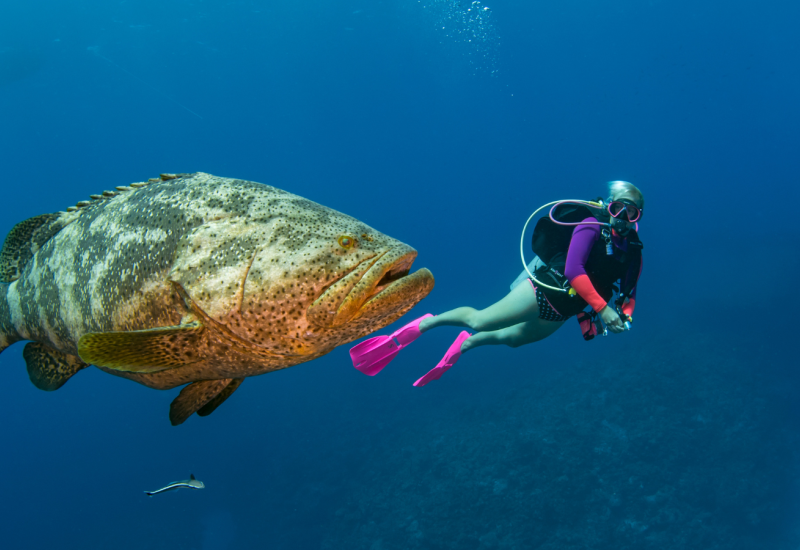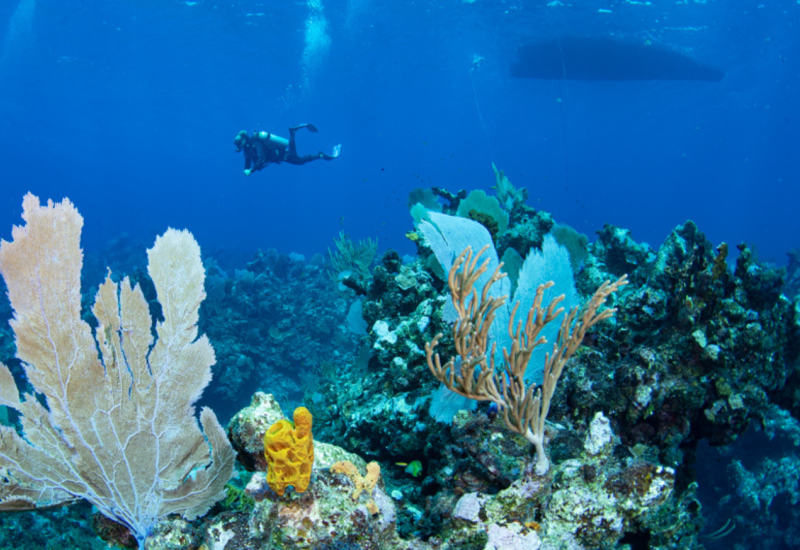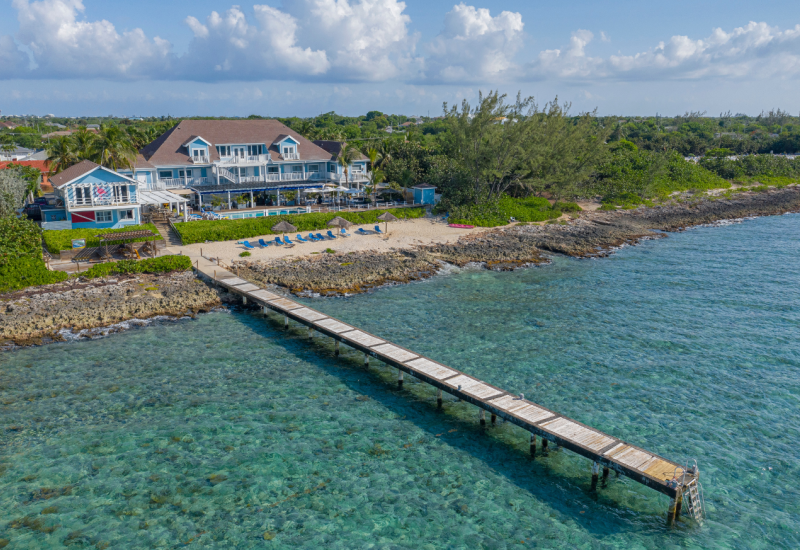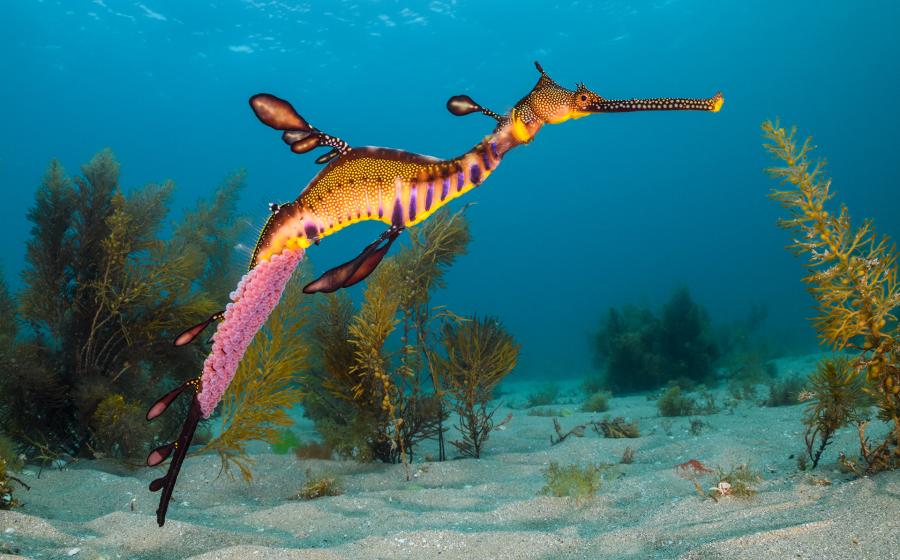At the Back of the Boat: Cathy Church

Cathy Church Teaching Photography
Courtesy of Cathy Church
At the Back of the Boat
Interviews with Notable Figures in the Dive Industry
June 2011: Cathy Church
Cathy Church has been an underwater photographer since 1967. She and her husband — fellow underwater photographer Herb Rafael — run Cathy Church's Photo Centre and Gallery at Sunset House Resort on Grand Cayman. A versatile photographer, Church has produced numerous award-winning photographs, ranging from documentary and editorial-style images to high-end gallery art.
Over the years, Church has garnered numerous accolades, including a NOGI award from the Underwater Academy of Arts and Sciences, induction into the Woman Divers Hall of Fame, DEMA’s “Reaching Out” award and induction into the International Scuba Diving Hall of Fame. Publications of her work include the coffee-table book My Underwater Photo Journey in 2004 and her latest collection, Imagination, was released in 2009. We caught up with Church this summer to learn more about her lengthy career and see what advice she has for those divers just getting their start in photography.
 Bottom Time: You’ve already made four dives on Grand Cayman’s newest dive attraction, the former USS Kittiwake. What was it like to dive this exciting new site?
Bottom Time: You’ve already made four dives on Grand Cayman’s newest dive attraction, the former USS Kittiwake. What was it like to dive this exciting new site?
Cathy Church: My first dive was right as it was going down. It was bubbling, with rust and paint chips flying everywhere. It was so exciting to be a part of the actual sinking. The second dive was the next day with scooters, and there was already a huge school of jacks congregating across the front of the bow. It was magical, and I love the photos from that dive. The third dive was hard work, as I was helping to remove the lift bags. That was truly exhausting. Then, several months later, I returned with a group of students, showing them how to use their cameras on the wreck. I enjoyed seeing all of the banded coral shrimp occupying many of the holes in the ship, and there was a group of squid just below the surface that was quite cooperative for the students' cameras. It has been really fun to watch this wreck mature.
BT: When and where did you first learn to dive?
CC: I was taking a course in freshwater biology at the University of Michigan's Biology station. I checked out a tank and had a quick look around underwater. From that point on, I was hooked. So I took an unofficial course at the YMCA in Ann Arbor, and I then went to Monterey, California, to study Marine Invertebrate Zoology at Stanford University's Hopkin's Marine Biology Station. There I took my first open-ocean dive with another biology student. We really had no idea what we were doing, so we guessed a lot. For example, when the dive was over, I remember asking the other student, "How deep do you think we were?" They replied, "Well, I put out about 100 feet of line for the anchor, so we must have been around 80 or 90 feet deep." To be honest, I never did take a proper diving class, but don't tell anyone that!
BT: When did you first begin using an underwater camera?
CC: I learned how to take pictures underwater in Monterey that same summer around 1966. That was when I first met Jim Church. He was helping at the local dive shop during his summer between semesters teaching high school. He had a Rolleimarin and a Calypso camera, and he taught me how to use them. Once I got the hang of it, I wanted a photo of every creature that I saw.
BT: You’ve been all over the world with your camera. What was your most memorable experience underwater?
CC: There are no moments that are not memorable! It’s hard to narrow it down to just one. I mean, there was the time when our boatman fell asleep in Chuuk, and his boat drifted off the dive site, so when we surfaced, there was no boat in sight with the sun just about to set. Or the shore dive in Hawaii when we ran low on air, and the current (heading for Japan) was too strong to swim against to get back to shore. Then there was that log I encountered in the Solomon Islands, which actually turned out to be a saltwater crocodile! Or the damselfish off Spanish Bay that kept picking up a small hermit crab that I set up for a photo. Each time I set the crab on a sponge, the damselfish would pick it up and emphatically throw it farther and farther away, until he went well beyond my reach, and I finally gave up. Or the time a spotted harbor seal in California kept nudging me, and I found out later that he was accustomed to divers giving him fish, and he wanted one from me. Or the time when I heard a volcano going off underwater in the Solomon Islands. Of course, I can’t forget about the time on Little Cayman when a turtle climbed onto my knees and put his beak right against my lens port, staring in as I took his photo. Or the time...
BT: Wow, you really do have a lot of amazing experiences! And your lifetime of work has been recognized with a number of awards, so you’re obviously a role model. What advice do you have for young women just beginning to get into underwater photography?
CC: If you have a passion to do something — whether it’s underwater or above water — don't take no for an answer. My father said he would help me go to school only if I wanted to be a nurse or a secretary. I have nothing against those professions; it just wasn’t what I wanted to do, so I basically had to go on my own and do it anyway. Women weren’t allowed on the research ships or at the research stations when I wanted to pursue a Ph.D., so I dropped out at the master's level and became a science teacher. That allowed me to teach underwater photography in Grand Cayman in the summers. I worked every day, all day for many years, getting better photos, writing more books. I finally became fully self-employed as an underwater photography teacher and writer. Don't depend on others to carry you along — make your own way in life. You may still get less respect than men get, but ignore it. Just be yourself, and do your best. Times are changing, and some day you may not have to be better to be equal.
For more information on Cathy and her work, click here.
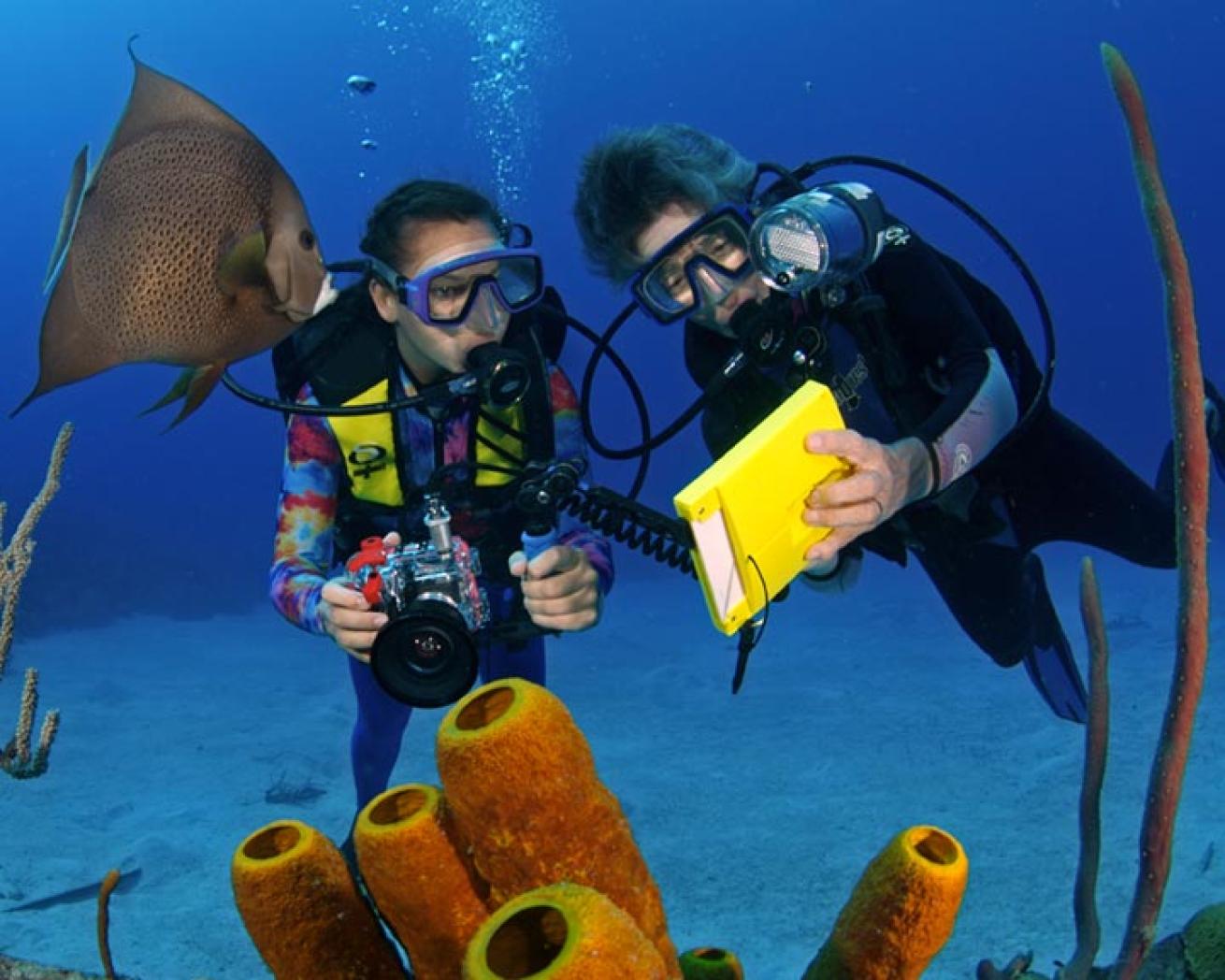
Courtesy of Cathy Church
At the Back of the Boat
Interviews with Notable Figures in the Dive Industry
June 2011: Cathy Church
Cathy Church has been an underwater photographer since 1967. She and her husband — fellow underwater photographer Herb Rafael — run Cathy Church's Photo Centre and Gallery at Sunset House Resort on Grand Cayman. A versatile photographer, Church has produced numerous award-winning photographs, ranging from documentary and editorial-style images to high-end gallery art.
Over the years, Church has garnered numerous accolades, including a NOGI award from the Underwater Academy of Arts and Sciences, induction into the Woman Divers Hall of Fame, DEMA’s “Reaching Out” award and induction into the International Scuba Diving Hall of Fame. Publications of her work include the coffee-table book My Underwater Photo Journey in 2004 and her latest collection, Imagination, was released in 2009. We caught up with Church this summer to learn more about her lengthy career and see what advice she has for those divers just getting their start in photography.
 Bottom Time: You’ve already made four dives on Grand Cayman’s newest dive attraction, the former USS Kittiwake. What was it like to dive this exciting new site?
Bottom Time: You’ve already made four dives on Grand Cayman’s newest dive attraction, the former USS Kittiwake. What was it like to dive this exciting new site?
Cathy Church: My first dive was right as it was going down. It was bubbling, with rust and paint chips flying everywhere. It was so exciting to be a part of the actual sinking. The second dive was the next day with scooters, and there was already a huge school of jacks congregating across the front of the bow. It was magical, and I love the photos from that dive. The third dive was hard work, as I was helping to remove the lift bags. That was truly exhausting. Then, several months later, I returned with a group of students, showing them how to use their cameras on the wreck. I enjoyed seeing all of the banded coral shrimp occupying many of the holes in the ship, and there was a group of squid just below the surface that was quite cooperative for the students' cameras. It has been really fun to watch this wreck mature.
BT: When and where did you first learn to dive?
CC: I was taking a course in freshwater biology at the University of Michigan's Biology station. I checked out a tank and had a quick look around underwater. From that point on, I was hooked. So I took an unofficial course at the YMCA in Ann Arbor, and I then went to Monterey, California, to study Marine Invertebrate Zoology at Stanford University's Hopkin's Marine Biology Station. There I took my first open-ocean dive with another biology student. We really had no idea what we were doing, so we guessed a lot. For example, when the dive was over, I remember asking the other student, "How deep do you think we were?" They replied, "Well, I put out about 100 feet of line for the anchor, so we must have been around 80 or 90 feet deep." To be honest, I never did take a proper diving class, but don't tell anyone that!
BT: When did you first begin using an underwater camera?
CC: I learned how to take pictures underwater in Monterey that same summer around 1966. That was when I first met Jim Church. He was helping at the local dive shop during his summer between semesters teaching high school. He had a Rolleimarin and a Calypso camera, and he taught me how to use them. Once I got the hang of it, I wanted a photo of every creature that I saw.
BT: You’ve been all over the world with your camera. What was your most memorable experience underwater?
CC: There are no moments that are not memorable! It’s hard to narrow it down to just one. I mean, there was the time when our boatman fell asleep in Chuuk, and his boat drifted off the dive site, so when we surfaced, there was no boat in sight with the sun just about to set. Or the shore dive in Hawaii when we ran low on air, and the current (heading for Japan) was too strong to swim against to get back to shore. Then there was that log I encountered in the Solomon Islands, which actually turned out to be a saltwater crocodile! Or the damselfish off Spanish Bay that kept picking up a small hermit crab that I set up for a photo. Each time I set the crab on a sponge, the damselfish would pick it up and emphatically throw it farther and farther away, until he went well beyond my reach, and I finally gave up. Or the time a spotted harbor seal in California kept nudging me, and I found out later that he was accustomed to divers giving him fish, and he wanted one from me. Or the time when I heard a volcano going off underwater in the Solomon Islands. Of course, I can’t forget about the time on Little Cayman when a turtle climbed onto my knees and put his beak right against my lens port, staring in as I took his photo. Or the time...
BT: Wow, you really do have a lot of amazing experiences! And your lifetime of work has been recognized with a number of awards, so you’re obviously a role model. What advice do you have for young women just beginning to get into underwater photography?
CC: If you have a passion to do something — whether it’s underwater or above water — don't take no for an answer. My father said he would help me go to school only if I wanted to be a nurse or a secretary. I have nothing against those professions; it just wasn’t what I wanted to do, so I basically had to go on my own and do it anyway. Women weren’t allowed on the research ships or at the research stations when I wanted to pursue a Ph.D., so I dropped out at the master's level and became a science teacher. That allowed me to teach underwater photography in Grand Cayman in the summers. I worked every day, all day for many years, getting better photos, writing more books. I finally became fully self-employed as an underwater photography teacher and writer. Don't depend on others to carry you along — make your own way in life. You may still get less respect than men get, but ignore it. Just be yourself, and do your best. Times are changing, and some day you may not have to be better to be equal.
For more information on Cathy and her work, click here.

